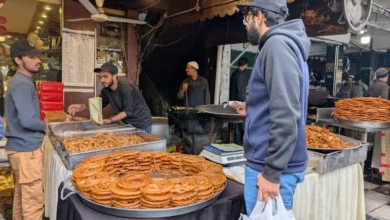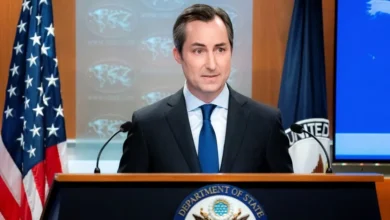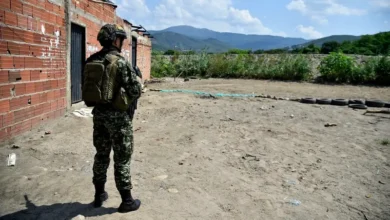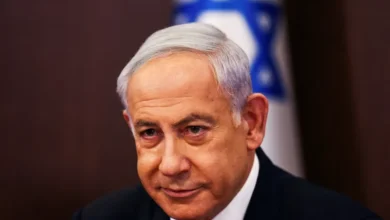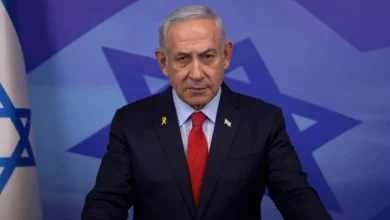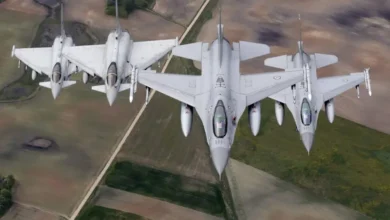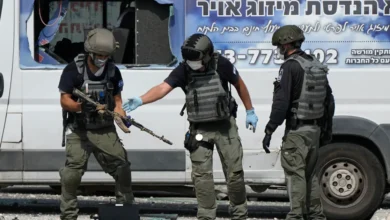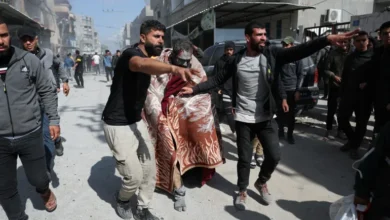Beyond Maghazi: What controversial weapons has Israel used in Gaza war?
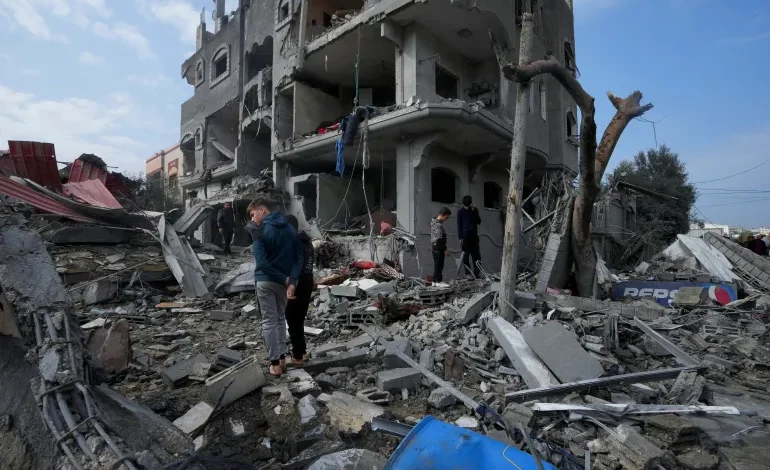
An Israeli official on Thursday acknowledged that the country’s military had used inappropriate munitions during an attack on the Maghazi refugee camp that killed at least 90 people earlier this week.
The official said that Israel’s military would investigate what happened. But while little is known about the specific munitions used in Maghazi, this is far from the first time that Israel’s army has faced criticism over the alleged or confirmed use of controversial weapons in its war on Gaza.
Israel has said its goal is to “completely eliminate” Hamas, which attacked southern Israel on October 7, but the reality on the ground has been the elimination of generations of Palestinians and their entire neighbourhoods. Israel’s war has killed more than 21,300 Palestinians, including at least 8,200 children, in Gaza. Another 7,000 people are missing, presumably buried under the rubble of the 313,000-plus homes that have collapsed from Israeli warfare.
Al Jazeera looks at some of the weapons that have been used in Israel’s “indiscriminate” bombardment of the Gaza Strip:
Dumb bombs
The term ‘dumb bombs’ refers to munitions that are not guided, but are free to fall and destroy wherever they land.
Earlier this month, CNN reported that nearly half of the Israeli munitions used on Gaza have been “dumb bombs”, citing research by the United States Office of the Director of National Intelligence.
Somewhere between 40-45 percent of the munitions Israel has dropped on Gaza have been unguided, but these munitions are less accurate and carry a greater risk of inflicting civilian casualties.
Marc Garlasco, a former war crimes investigator for the United Nations, called the US intelligence assessment “shocking”.
Bunker buster bombs
Generously provided to Israel for its war on Gaza by its friend the United States, BLU-109 bombs are designed to penetrate hardened structures before exploding.
The bombs can carry a warhead weighing more than 900kg (1984 pounds) and have previously been used by the US in conflicts including the war in Afghanistan.
“Many people are now questioning in Congress whether continuing to give these “bunker bombs” is a good idea and also calling for more transparency,” Al Jazeera’s Heidi Zhou-Castro said.
This level of weaponry has been used by the US before, but mainly in open areas. To do so in a densely populated area can only lead to one thing – high casualties.
US arms to Israel since the start of the war have also included 15,000 bombs and 57,000 (155mm) artillery shells.
And there’s more: 5,000 unguided MK-82 bombs, more than 5,400 MK-84 bombs, and about 1,000 GBU-39 small-diameter bombs.
JDAMs
There are also about 3,000 Joint Direct Attack Munitions or JDAMs – a guidance kit that uses GPS to turn unguided bombs into precision-guided munitions, effectively making the dumb bombs “smart”. However, their effectiveness depends on the quality of intelligence received.
An Amnesty International investigation released earlier this month found that the Israeli military used US-made JDAMs to bomb two homes in Gaza in October, killing 43 members of two families.
In other cases, weapon functionality is also crucial, as technical malfunctions can cause smart bombs to miss their targets, and human error during the targeting process can lead to the misidentification of marks.
“In various conflicts, there have been reports of secondary strikes occurring shortly after an initial strike, hitting rescue workers and civilians rushing to help the wounded, significantly increasing civilian casualties,” Magnier said.
Earlier in the war Israel used smart bombs in Gaza as part of a broader military strategy “aimed at accurately targeting militant infrastructure to achieve military objectives” Magnier said, but “with no attempt to limit civilian casualties and infrastructure damage”.
“The effectiveness of these weapons in achieving strategic objectives without causing disproportionate harm is impossible”, Magnier added.
“The principle of distinction, a cornerstone of [international humanitarian] law, requires the invading Israeli army to always distinguish between combatants and military targets on the one hand, and civilians and civilian objects on the other and to target only the former.”
White phosphorus
Use of the colourless chemical weapon is restricted under international humanitarian law, with conditions that it must never be fired at, or in close proximity to, a populated civilian area or civilian infrastructure.
However, evidence of its use by Israel in the war on Gaza was reported by Human Rights Watch (HRW) early in the conflict.
Highly combustible, it can cause fires and smoke to spread quickly.
“Airbursting white phosphorus spreads the substance over a wide area, depending on the altitude of the burst, and it exposes more civilians and infrastructures than a localised ground burst,” Ahmed Benchemsi, communications director for HRW’s Middle East and North Africa Division, told Al Jazeera.
Last month a doctor from al-Shifa Hospital told the Toronto Star he had seen patients with deep wounds, with “third and fourth-degree burns, and the skin tissue is impregnated with black particles and most of the skin thickness and all the layers underneath are burned down to the bone”.
Dr Ahmed Mokhallalati said these weren’t phosphorus burns, “but a combination of some kind of incendiary bomb wave and other components”, feeding into claims that Israel also uses war to test unknown weapons.
But what makes white phosphorous even more dangerous, said Nada Majdalani, the Ramallah-based Palestine director for EcoPeace Middle East, is the presence of rain in the air.
“As Gaza enters the rainy season, we expect the rain to fall as acid rain, contaminated with white phosphorus,” Majdalani said. People who use plastic sheets to collect rainwater to drink directly, amid a shortage of drinking water, could be particularly at risk, she said.
Hunger
This month, HRW said in a statement that Israel was deliberately depriving Palestinians of access to food, water and other basic necessities.
Under international humanitarian law, creating a situation of hunger with intent against a civilian population is a war crime.
Omar Shakir, Israel and Palestine director at HRW, said: “Israel has been depriving Gaza’s population of food and water, a policy spurred on or endorsed by high-ranking Israeli officials and reflecting an intent to starve civilians as a method of warfare.
“World leaders should be speaking out against this abhorrent war crime, which has devastating effects on Gaza’s population,” he added.
Just a month after the war began, all of northern Gaza’s bakeries closed due to a lack of supplies such as flour and fuel, the UN reported on November 8.
By early February, if the war continues, Gaza could be facing a famine, according to a report by the Integrated Food Security Phase Classification (IPC), a body that measures hunger risks.

